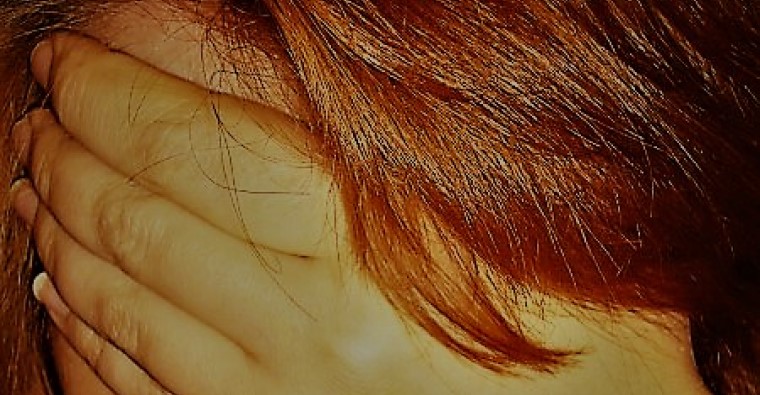
Headache: Types, Causes, Diagnosis & Treatment
Unfortunately, not many people can pride themselves on not ever having headaches, but the good news is, they are fairly treatable in most of the cases, in spite the fact that this neurological disorder has highly diverse underlying causes of considerable complexity. In this post, we would like to give you an overview of headaches, as such, and give you some hints on what to do when having bad episodes. After all, there is a 50% chance anybody will experience headache during any given year worldwide, and if you are aged between 18–65, this chance can jump up to 75% (1).
If you are having regular headaches, and decide to see a doctor, it is always good to give the specialist some history about your headaches, such as:
-
How old you were when the headaches started
-
How often these occur
-
How long you have been experiencing them
-
Who else in your family has headaches
-
Where the pain is located
-
How long the headache lasts
-
If there is an aura (changes in vision, blind spots, or bright lights) before the headache
Doctors might also advise you to keep a headache diary as it might come in handy for the diagnosis, especially when you see a doctor first. In any case, the doctor will perform a complete physical and neurological exam.
When it comes to diagnosis, there can be numerous types of headaches, and we will not provide a comprehensive list of the possible scenarios, but most of them typically fall into one of four categories (3):
-
Migraine (with/without auras):characterized by recurrent, often life-long, moderate-to-severe attacks with pulsating feeling which last for 4–72 hours. Typically experienced on one side of the head (hence the origin of the name: émikrania [greek] > hemicrania[latin] meaning ‘hemisphere’ (2)) and is accompanied by oversensitivity to environmental stimuli (light, sound, scents) and excessive fatigue. Generally, but now always, it is a disorder in itself, and not an indicator of underlying diseases. The root cause is unknown, but it is extensively researched, and is found to correlated with hormonal fluctuations. This is supported by the fact, that it is twice as common among women than among men, and the symptoms usually start at puberty and disappears after menopause.
-
Tension-type headache:rarely occurring, episodic or chronic, mild-to-moderate headaches lasting for minutes to days. Typically experienced on both sides with a sensation of a tight band or vice squeezing the head. It is the most common type of the four, and its mechanism may be stress-related or associated with musculoskeletal problems in the neck.
-
Cluster headache:the most severe type but, fortunately, the least common, affecting 1 in 1000 adults, six men to each woman. It is characterized by frequently recurring (up to several times a day), brief but extremely severe headache, usually focused in or around one eye, with tearing and redness of the eye, the nose runs or is blocked on the affected side and the eyelid may droop. It also has episodic or chronic forms.
-
Medication-overuse headache:we have the clearest knowledge of the underlying causes of this type, as it is caused by chronic and excessive use of medication to treat headache, thus it is a secondary disorder. It occurs by definition on more days than not, is oppressive, persistent and often at its worst on awakening, and more women are affected than men.
The first three types are primary headaches which means they are the disorders themselves, and not symptoms of another, often more serious medical condition. Although, physical and neurological exams reveal several disorders that may be causing the headache, including brain tumor, hemorrhage, inflammation, blood clots, trauma or blood vessel abnormalities, additional tests may be needed to look for other medical conditions that may be causing your headaches or migraines. Keep in mind that most of these tests are not helpful in diagnosing migraine, cluster, or tension headaches, they are rather used for revealing underlying conditions. Typically, the tests you are going to need (hopefully not all of them) are the following (4):
-
Blood Chemistry and Urinalysis:These lab tests may determine many medical conditions, including diabetes, thyroid problems, and infections, which can cause headaches.
-
CT Scan: This is a test in which X-rays and computers are used to produce an image of a cross-section of the body. A CT scan of the head may be recommended to rule out other conditions if you are getting daily or almost daily headaches.
-
MRI: This test produces very clear pictures, or images, of the brain without the use of X-rays. MRI uses a large magnet, radio frequency (RF), and a computer to produce these images. An MRI may be recommended, if you are getting daily or almost daily headaches. It may also be recommended if a CT scan does not show definitive results. In addition, an MRI scan is used to evaluate certain parts of the brain that are not as easily viewed with CT scans, such as the spine at the level of the neck and the back portion of the brain.
-
Sinus X-Ray:Although the CT scan and MRI provide more details, your doctor may use this test if your symptoms seem to indicate sinus problems.
-
EEG:Electroencephalogram is not a standard part of a headache evaluation but may be performed, if your doctor suspects you are having seizures.
-
Eye Exam: An eye pressure test performed by an eye doctor (ophthalmologist) will rule out glaucoma or pressure on the optic nerve as a cause of headaches.
-
Spinal Tap: A spinal tap is the removal of spinal fluid from the spinal canal (located in the back). This procedure is performed to look for conditions such as infections of the brain or spinal cord.
Appropriate treatment of headache disorders requires training of health professionals, accurate diagnosis and recognition of the conditions. Proper treatment not always include medication, instead, simple lifestyle modifications can be effective in several cases, that is, identifying and eliminating the triggering factors, especially in cases where medications are contraindicated (other serious illness or pregnancy) (3). On the other hand, as headache is still a hot topic in research, plenty of drugs are available for the vast majority of specific headache types. The main classes of drugs to treat headache disorders include analgesics, anti-emetics, specific anti-migraine medications, and prophylactic medications.
Fun Fact: although headaches are regarded as neurological disorders, it is never the brain cells (neurons) that hurt, only the tissues around them (blood vessels, meninges, skull etc.).
References:





0 Comments